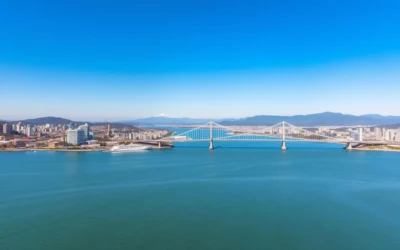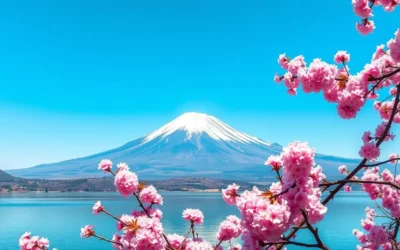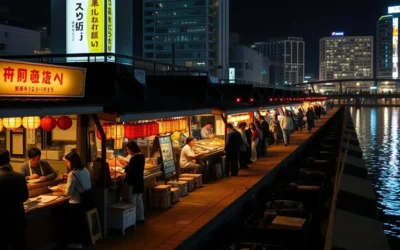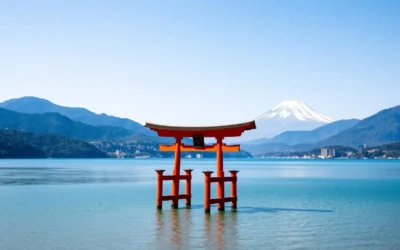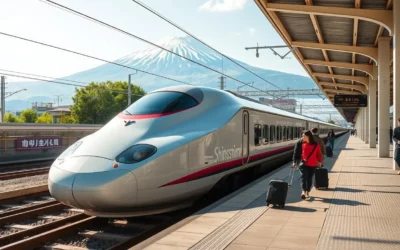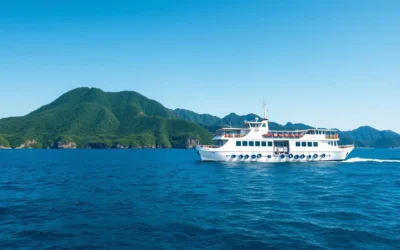✓ Accommodations ✓ Flights ✓ Rental Cars ✓ Tours & Activities
Did you know that Naha is home to Japan’s first public market dating back over 400 years? As the vibrant capital of Okinawa Prefecture, Naha blends ancient Ryukyu Kingdom heritage with modern Japanese culture, creating a unique destination unlike anywhere else in Japan. From exploring UNESCO World Heritage sites to savoring distinctive Okinawan cuisine, Naha offers travelers an authentic glimpse into Japan’s tropical southern islands.
Getting to Naha
As Okinawa’s main gateway, Naha is well-connected to mainland Japan and several international destinations. Most visitors arrive via Naha Airport, which handles numerous domestic flights daily from Tokyo (2.5 hours), Osaka (2 hours), and other major Japanese cities.
Ready to Book Your Flight to Naha?
Find the best deals on flights to Naha from major cities worldwide.
International travelers can find direct flights from Taipei, Seoul, Hong Kong, and Shanghai. For those already in Japan, budget airlines like Peach Aviation and Jetstar Japan offer affordable options to reach this tropical paradise.
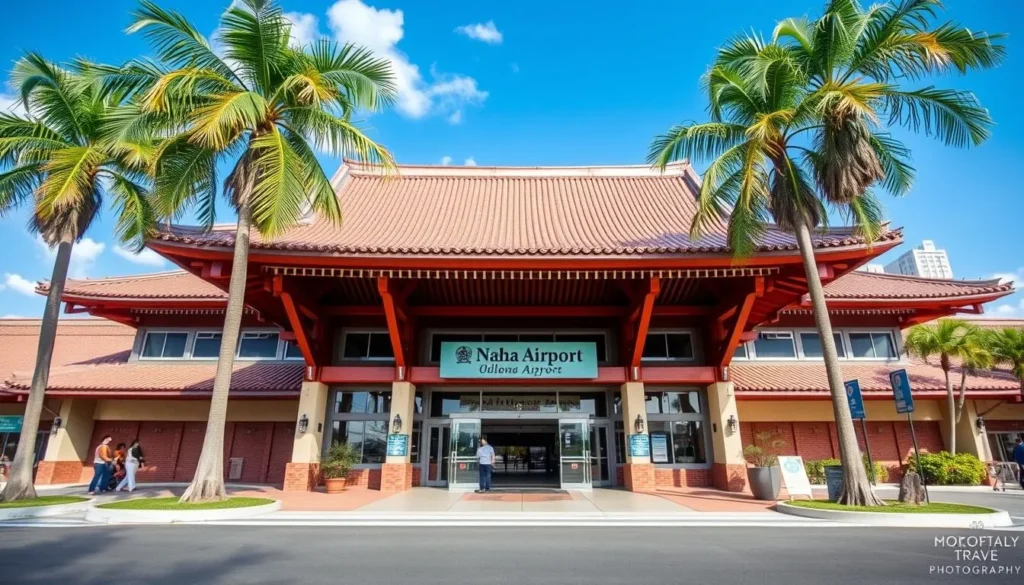
Best Time to Visit Naha
Naha enjoys a subtropical climate with warm temperatures year-round. The best time to visit is during spring (March-May) and autumn (September-November) when temperatures are pleasant and rainfall is minimal.
| Season | Temperature | Rainfall | Crowds | Notes |
| Spring (Mar-May) | 20-27°C (68-81°F) | Moderate | Moderate | Cherry blossoms in January-February (earlier than mainland) |
| Summer (Jun-Aug) | 28-33°C (82-91°F) | High (Rainy season: May-June) | High | Typhoon season begins in July |
| Autumn (Sep-Nov) | 23-30°C (73-86°F) | Moderate | Low | Great weather, fewer tourists |
| Winter (Dec-Feb) | 17-22°C (63-72°F) | Low | Low (except New Year) | Mild temperatures, good for sightseeing |
Naha hosts several festivals worth planning your trip around, including the Naha Dragon Boat Races (May), the Naha Tug-of-War (October) which holds a Guinness World Record, and the vibrant Naha Festival (October).
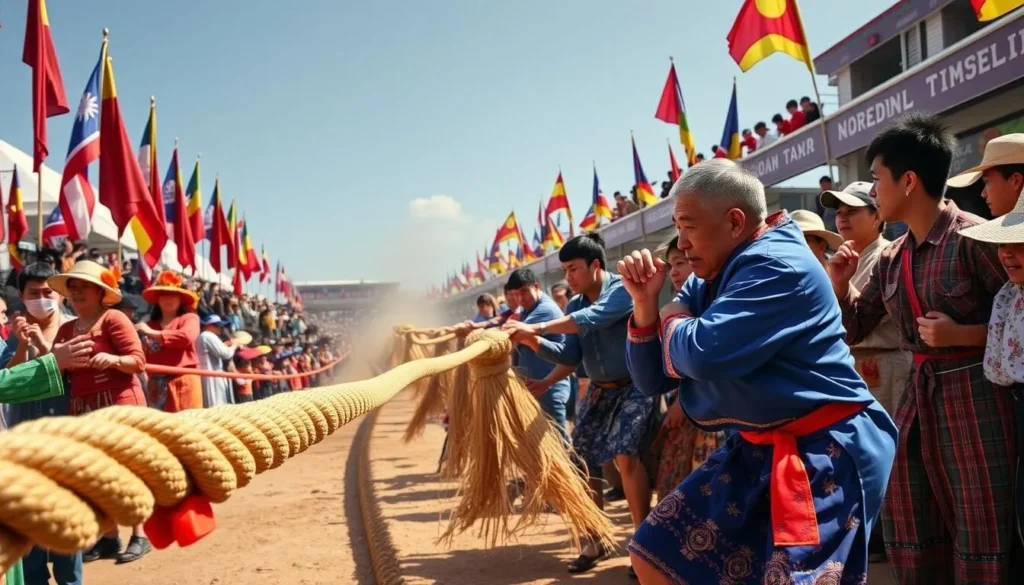
Getting Around Naha
Naha is relatively compact, making it easy to explore. The city’s efficient public transportation system and walkable districts ensure you can reach most attractions without hassle.
Yui Rail Monorail
Naha’s elevated monorail (Yui Rail) runs from the airport through downtown, stopping at major attractions including Kokusai Street and near Shuri Castle. A one-day pass costs 800 yen and offers unlimited rides.
Buses
An extensive bus network covers areas beyond the monorail. The main bus terminal is located at Naha Bus Terminal near Kokusai Street. Consider purchasing a one-day bus pass for 1,000 yen for unlimited travel.
Rental Cars
For exploring beyond the city limits, renting a car provides the most flexibility. International driving permits are required for foreign visitors. Traffic moves on the left side of the road.
Explore Okinawa at Your Own Pace
Rent a car to discover hidden beaches and remote attractions around Naha.
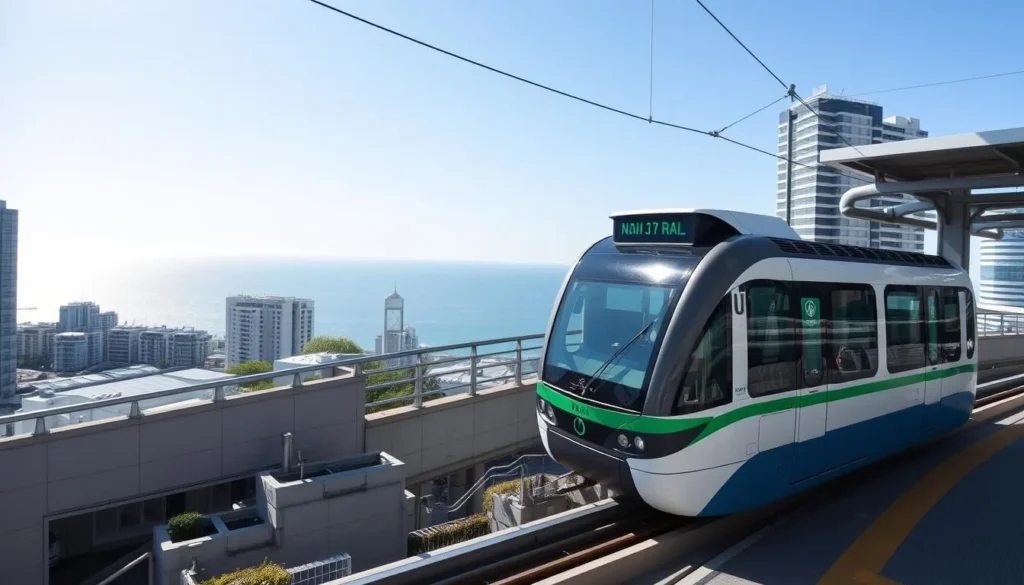
Where to Stay in Naha
Naha offers accommodation options for every budget, from luxury resorts to budget-friendly guesthouses. Most visitors choose to stay near Kokusai Street for convenience to restaurants, shopping, and transportation.
Kokusai Street Area
The heart of Naha with easy access to shopping, dining, and nightlife. Staying here puts you within walking distance of many attractions and the monorail.
Naha Harbor Area
Offers beautiful ocean views and proximity to ferry terminals for island day trips. Generally quieter than the Kokusai Street area with several upscale hotels.
Shuri Area
Located near historic Shuri Castle, this residential area provides a more authentic local experience away from tourist crowds, while still being accessible via monorail.
Find Your Perfect Stay in Naha
Browse a wide selection of hotels, guesthouses, and vacation rentals to suit every budget.
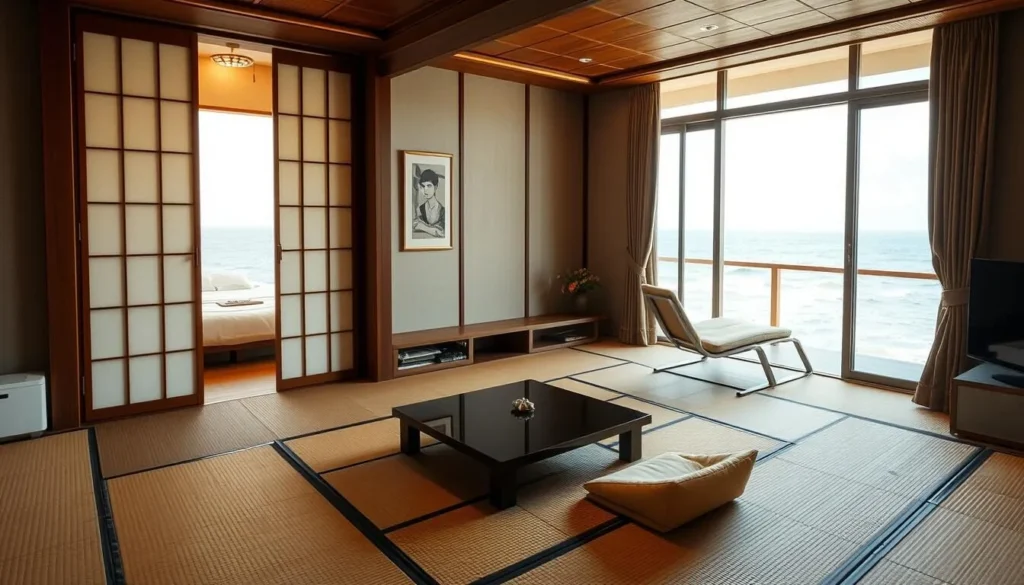
Top 10 Things to Do in Naha, Japan
1. Explore Shuri Castle
A UNESCO World Heritage site and former palace of the Ryukyu Kingdom, Shuri Castle showcases the unique architecture and cultural heritage of Okinawa. Although the main buildings were destroyed by fire in 2019, reconstruction is underway, and many areas remain open to visitors. Don’t miss the spectacular views of Naha from the castle grounds.
- Entrance fee: 400 yen
- Hours: 8:30 AM – 7:00 PM (April-June, October-November), 8:30 AM – 8:00 PM (July-September), 8:30 AM – 6:00 PM (December-March)
- Access: 15-minute walk from Shuri Station on the Yui Rail
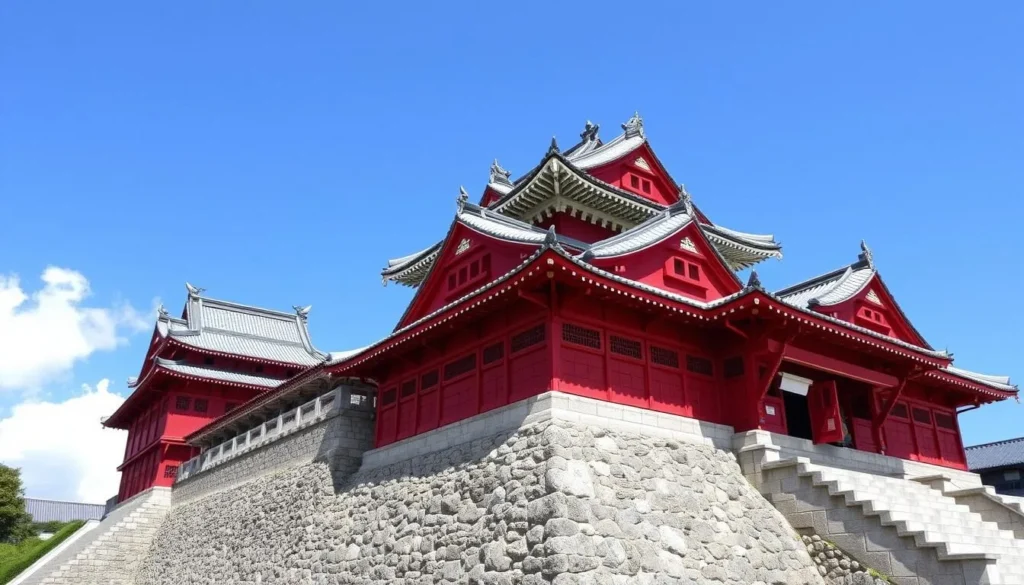
2. Shop on Kokusai Street
Known as the “Miracle Mile,” this 1.6-kilometer shopping street is the bustling heart of Naha. Lined with souvenir shops, restaurants, cafes, and bars, Kokusai Street offers everything from traditional Okinawan crafts to modern fashion. Street performers and the lively atmosphere make it a must-visit, especially in the evening.
- Most shops open from 10:00 AM – 8:00 PM
- Access: 5-minute walk from Makishi or Miebashi Station on the Yui Rail
- Don’t miss: Heiwa Dori and Mutsumi Dori covered shopping arcades branching off the main street
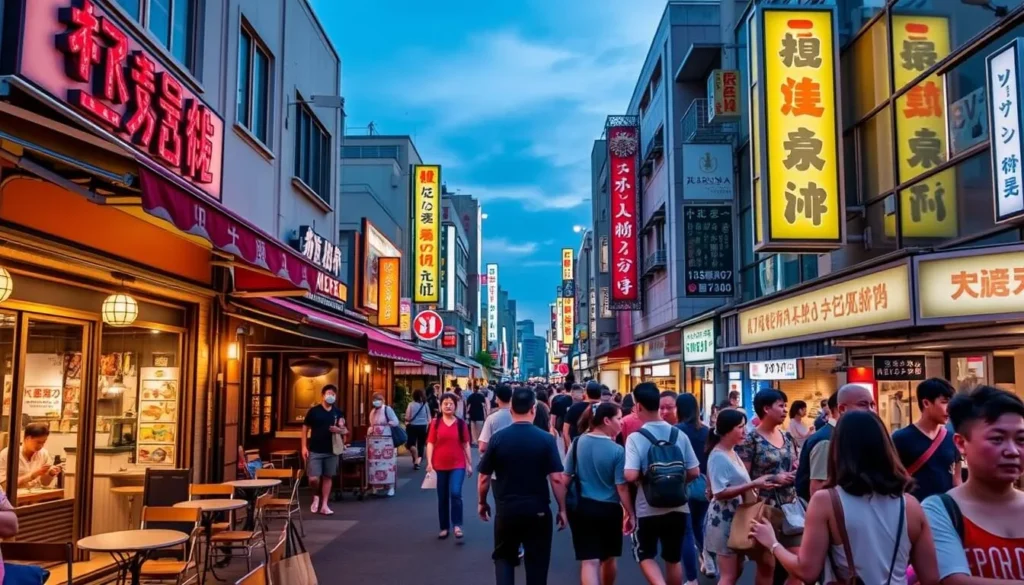
3. Visit Makishi Public Market
Often called “Naha’s Kitchen,” this two-story market offers a glimpse into local food culture. The first floor features fresh seafood, meat, produce, and Okinawan specialties. Purchase ingredients downstairs and have them cooked to your preferences at restaurants on the second floor for a truly local dining experience.
- Hours: 8:00 AM – 8:00 PM (market), 10:00 AM – 8:00 PM (restaurants)
- Access: 3-minute walk from Makishi Station on the Yui Rail
- Must-try: Fresh sashimi, Okinawan pork dishes, and sea grapes (umibudo)
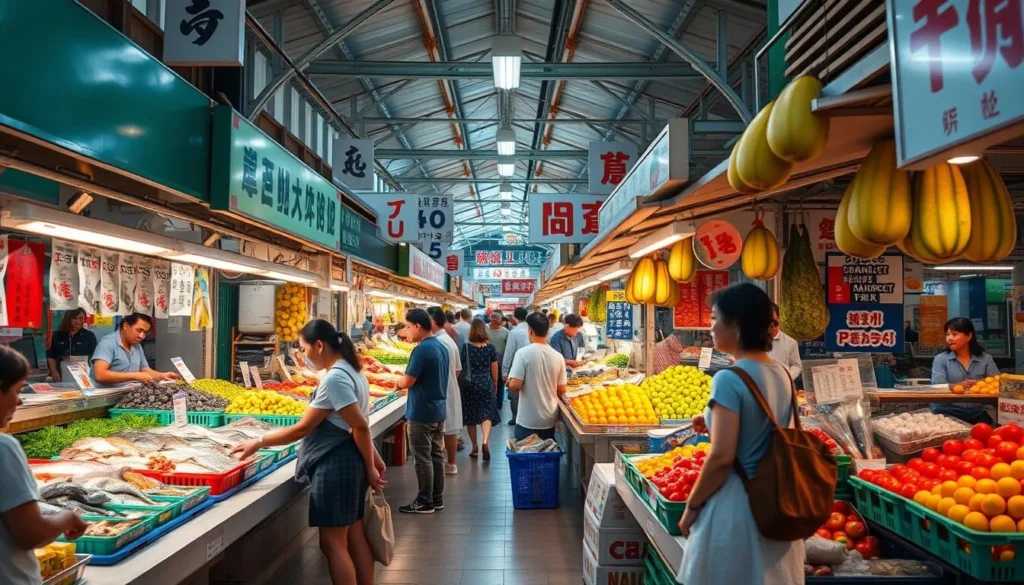
4. Relax at Naminoue Beach
As the only beach within Naha city limits, Naminoue Beach offers a convenient spot to enjoy the ocean without leaving town. Though small, this white sand beach provides swimming opportunities and beautiful sunset views. The adjacent Naminoue Shrine adds cultural interest to your beach visit.
- Swimming season: April to October
- Access: 15-minute walk from Asahibashi Station on the Yui Rail
- Facilities: Changing rooms, showers, and nearby restaurants
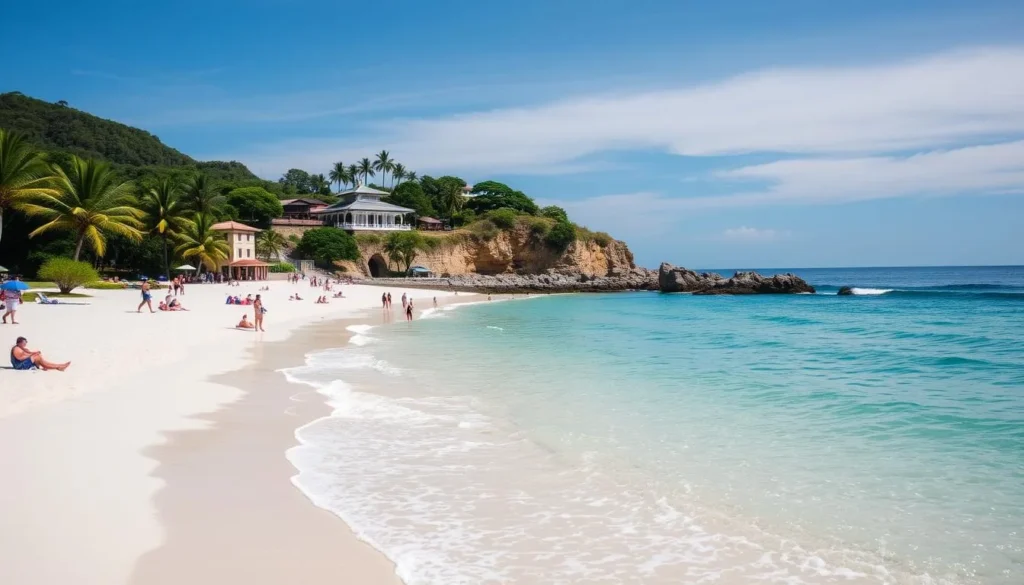
5. Discover Okinawa Prefectural Museum
This modern museum complex houses both a history museum and an art museum, offering comprehensive insights into Okinawa’s unique culture, natural history, and artistic traditions. Interactive exhibits and English explanations make it accessible for international visitors.
- Entrance fee: 530 yen (combined ticket)
- Hours: 9:00 AM – 6:00 PM (closed Mondays)
- Access: 10-minute walk from Omoromachi Station on the Yui Rail
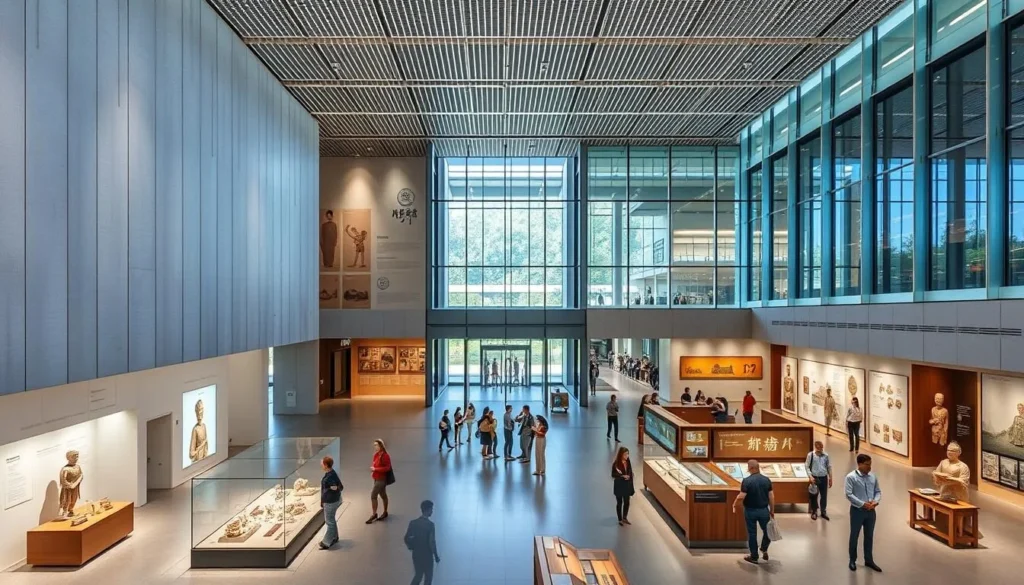
6. Stroll Through Fukushu-en Garden
This Chinese-style garden was built to commemorate the friendship between Naha and its sister city Fuzhou in China. With its peaceful ponds, ornate pavilions, and stone bridges, the garden offers a tranquil escape from the city bustle and beautiful photo opportunities.
- Entrance fee: 200 yen
- Hours: 9:00 AM – 6:00 PM (closed Wednesdays)
- Access: 10-minute walk from Miebashi Station on the Yui Rail
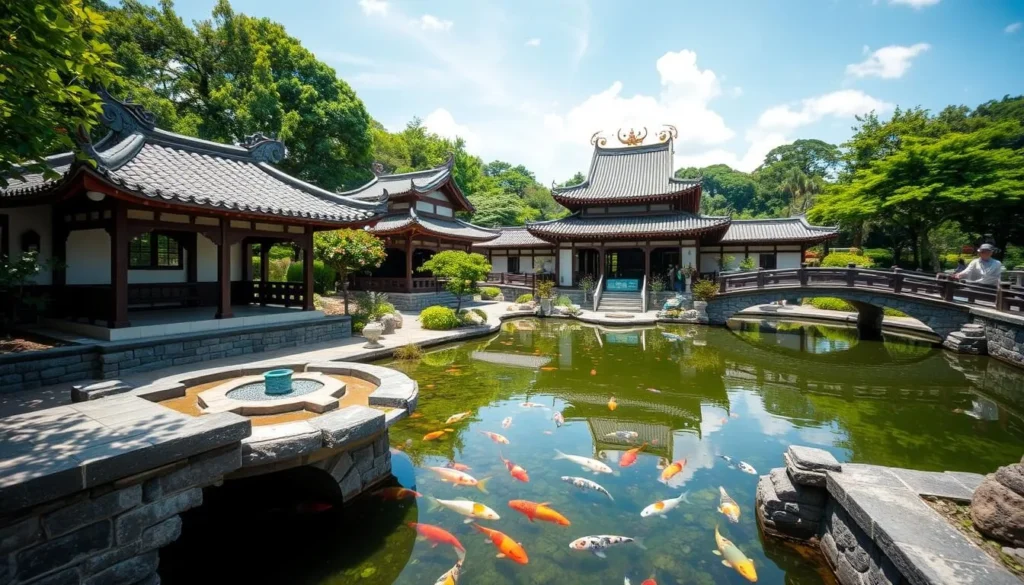
7. Explore Tsuboya Pottery District
As the traditional ceramics center of the Ryukyu Kingdom, Tsuboya remains home to pottery workshops, galleries, and the Tsuboya Pottery Museum. Wander the narrow streets to watch artisans at work and purchase authentic Okinawan ceramics directly from the creators.
- Museum entrance fee: 350 yen
- Museum hours: 10:00 AM – 6:00 PM (closed Mondays)
- Access: 15-minute walk from Makishi Station on the Yui Rail
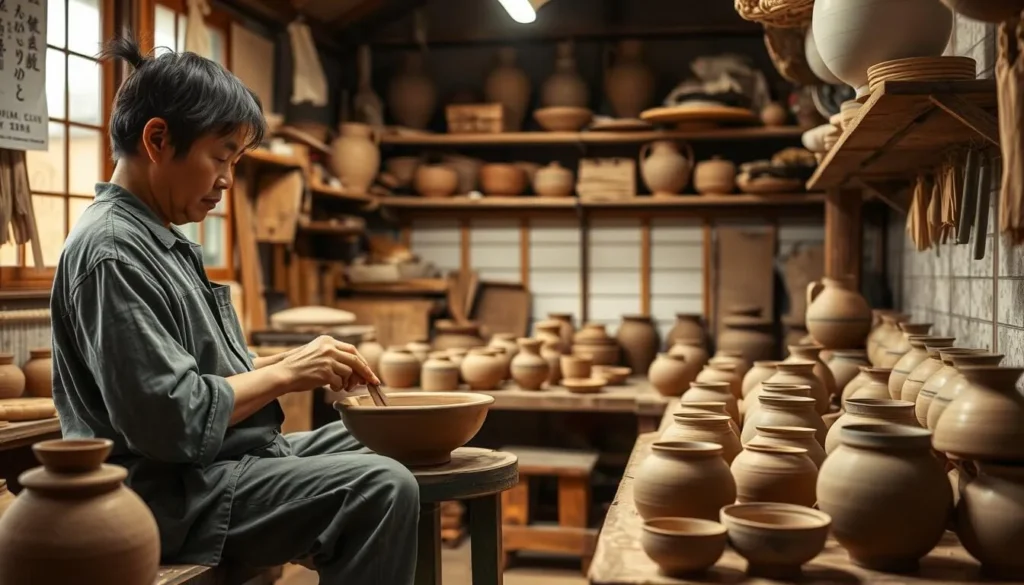
8. Visit Shikina-en Royal Garden
Another UNESCO World Heritage site, this former royal villa and garden blends Japanese, Chinese, and Ryukyuan landscaping styles. Built in the late 18th century as a second residence for the Ryukyu royal family, its peaceful ponds, stone bridges, and seasonal flowers create a serene atmosphere.
- Entrance fee: 400 yen
- Hours: 9:00 AM – 5:30 PM (closed Wednesdays)
- Access: 15-minute walk from Shuri Station on the Yui Rail
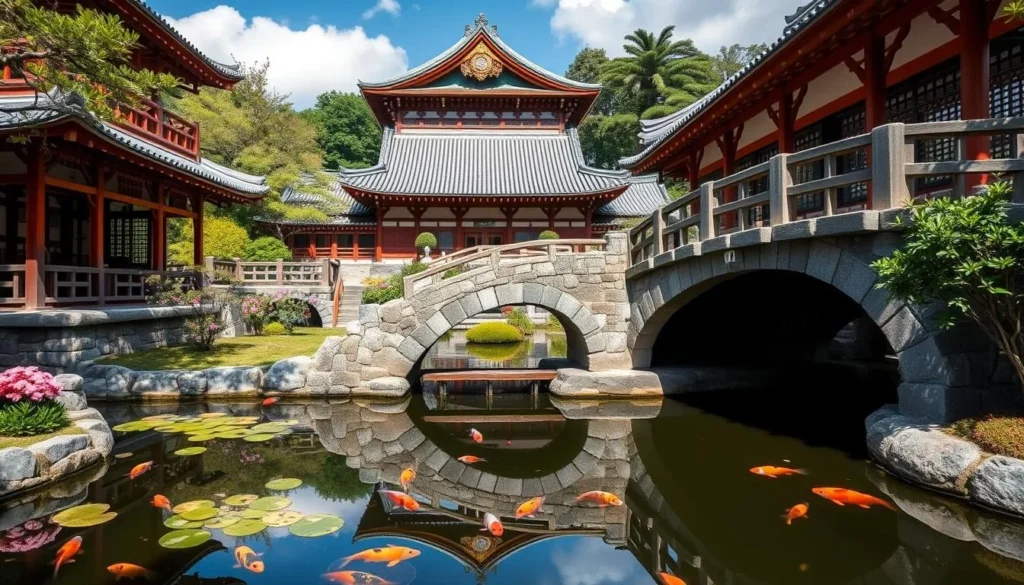
9. Sample Okinawan Cuisine
Okinawan food differs significantly from mainland Japanese cuisine, influenced by the island’s history and subtropical climate. Try local specialties like goya champuru (bitter melon stir-fry), Okinawa soba (pork-based noodle soup), rafute (braised pork belly), and Awamori (Okinawan rice spirit).
- Best areas for local food: Kokusai Street, Makishi Public Market
- Must-try dessert: Purple sweet potato (beni-imo) treats
- Local drink: Awamori (traditional Okinawan rice spirit)

10. Take a Day Trip to Nearby Islands
Naha serves as a gateway to Okinawa’s stunning outer islands. The Kerama Islands, just a 30-60 minute ferry ride away, offer pristine beaches and world-class snorkeling. Tokashiki and Zamami islands are particularly popular for day trips, with crystal-clear waters and abundant marine life.
- Ferry terminal: Tomari Port in central Naha
- Travel time: 30-60 minutes depending on the island
- Best for: Snorkeling, swimming, hiking, and beach relaxation
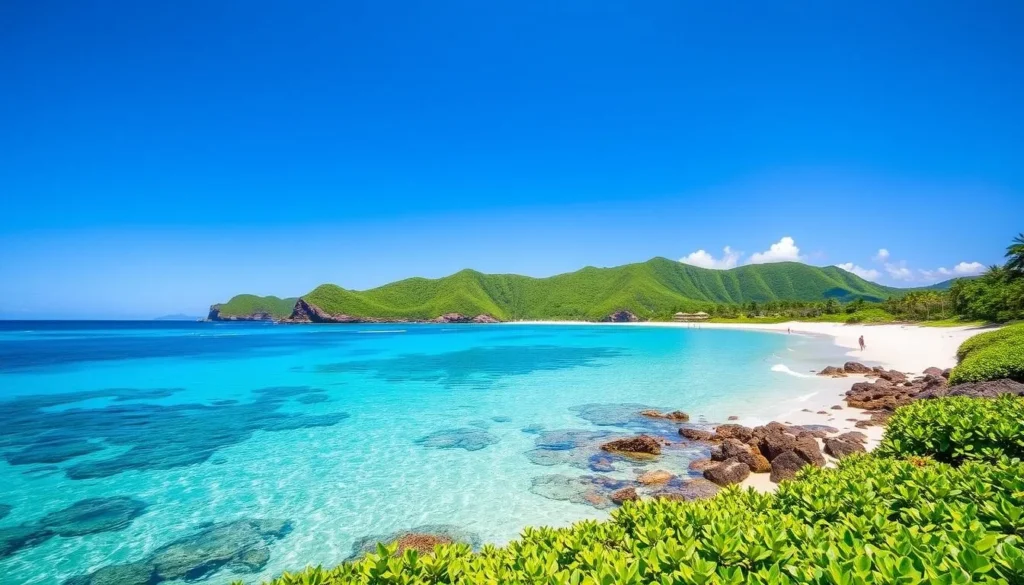
Practical Tips for Visiting Naha
Language
While English signage is available at major tourist spots, having a translation app handy is helpful. Learning a few basic Japanese phrases will be appreciated by locals. The Okinawan dialect differs from standard Japanese but isn’t necessary for tourists.
Currency & Payment
Japan is still largely cash-based, especially in smaller establishments. Ensure you have Japanese yen on hand. ATMs at 7-Eleven convenience stores accept most international cards. Major hotels and department stores accept credit cards.
Internet Access
Free Wi-Fi is available at the airport, major train stations, and many cafes. Consider renting a pocket Wi-Fi device or purchasing a Japanese SIM card for continuous connectivity during your trip.
Experience the Magic of Naha
Naha offers a fascinating blend of Ryukyu Kingdom heritage, Japanese influence, and tropical island charm that sets it apart from any other destination in Japan. From exploring ancient castle ruins to savoring unique Okinawan cuisine and relaxing on pristine beaches, Naha provides diverse experiences for every type of traveler.
As the gateway to Okinawa’s stunning islands, Naha deserves more than just a quick stopover. Give yourself at least 2-3 days to fully appreciate this vibrant city before venturing to the outer islands. With its rich cultural heritage, friendly locals, and laid-back tropical atmosphere, Naha will leave you with unforgettable memories and a desire to return to explore more of Okinawa’s treasures.
Ready to Explore Naha?
Start planning your perfect Okinawan adventure today!
—
The above is subject to change.
Check back often to TRAVEL.COM for the latest travel tips and deals.

